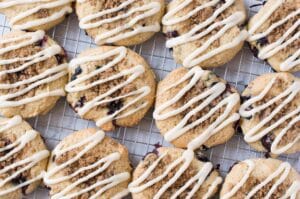Super nutrition hopefuls! Learn how you can incorporate some of the most nutritious foods into your weekly meals. It’s easier than you think!
Congratulations! You’ve made it to post five of the Meal Mapping blog series. While this post happens to be last, that doesn’t mean it’s the least important. In fact, it might be the most important because this one is all about turning you into a nutrition savvy Meal Mapper, something I know you want to become. It’s easier than you think especially when you’re armed with these 5 strategies for smart, healthful Meal Mapping.
Strategy #1 – Plan for More Veggies and Fruits

Inside Tip – Include plenty of fruits and veggies on your Meal Mapping calendar. Here are some ideas that work:
- Find a recipe that makes a big batch of veggies, make it once and then enjoy it throughout the week.
- Stock your freezer with frozen veggies and fruits. These days you can find almost every vegetable or fruit frozen. Buy green beans, artichoke hearts, bell peppers, berries, mangoes, whatever you love or want to try!
- Don’t get bogged down with worrying about time. Buy pre-cut veggies and fruits as well as bagged lettuce to make meals easy and stress-free
Strategy #2 – Plan for Meatless Monday
Map out Monday night’s meal as meat-free. This is a great way to get more vegetables and fruit in (remember strategy #1?) and also encourages you to find and try other lean protein sources such as nuts, beans, eggs and soy. Taking meat out of the “map” for one day a week is also good for your health as it may help reduce your risk of developing chronic preventable diseases such as heart disease, diabetes, obesity and cancer. It also has a positive impact on our environment. Learn more about Meatless Monday here.
Inside Tip – Try making your own beans by cooking them from scratch. They taste better than the canned variety and you can make a big batch for Monday, then save the rest for another meal later in the week or freeze for another meal next week or month. Check out my easy Basic Black Beans from Scratch recipe.
Strategy #3 – Plan for More Whole Foods
What do I mean by this? I mean, buy foods that haven’t been overly commercially processed. Think fruits and vegetables, whole grains, lean meats, poultry and fish, milk and yogurt. Buy fewer foods that contain thousands of unnecessary ingredients. Many of these foods, which include items such as sugary cereals, chips, white bread, as well as some frozen entrees and soups, not only contain too many ingredients, but they are also loaded with an excessive amount of sodium and sugar. And who needs that?
Inside Tip: Think you can’t afford whole foods? Think again. Buy produce when it’s in-season and buy grains, beans and other pantry items in the bulk bins. And don’t forget to check the store’s sales before you go, you’d be surprised at the great deals you can get.
Strategy #4 – Plan to Use Reputable Resources
You’re likely searching the internet to find some great ideas for recipes for Meal Mapping, right? The internet is a great too for that, but I advise you to be smart about where you’re getting your information. Some recipe sites are developed by bloggers (some of which are nutrition super-stars, but plenty who aren’t), home cooks or the donut store in your local town. Yes, these are fine sites, but they may not care too much about nutrition. Some of the recipes they create may sound “healthy” but aren’t really. For example, the other day I found a quinoa recipe and it was being deemed “healthy” because of that quinoa. Never mind that it also was loaded with oil, sodium and high-fat cheese. That sort of negates the nutrition of that quinoa, right?
Inside Tip: Do your homework! Research the site before you start trusting it. Find out who’s writing it and if they have any legit education when it comes to nutrition. Head to my site (sorry, selfish plug!) or find other great Registered Dietitian Nutritionists who have amazing blogs and recipes. You’ll know them by the “RDN” found after their names!
Strategy #5 – Plan for Less Added Sugar
Please note I say “added sugar” here. The natural sugar found in foods like fruits and dairy, aren’t what’s concerning. What is concerning is the whopping 12-18% of the calories we’re eating that come from added sugars. The Dietary Guidelines recommend that we get no more than 10%, so we’ve got some work to do. Just how do we do that? It might be easier than you think. The biggest source of added sugars in our diets happens to be sweetened beverages. So next time you’re meal mapping and organizing your grocery list, take off sodas, flavored waters, sweetened coffee drinks, energy drinks and other sugary drinks that you know you don’t need (and shouldn’t waste your money on!). Instead, fill up on free, delicious water! Next, re-think your snacks. The next biggest source of added sugar in our diets comes from sweets and snacks. Make cakes, cookies, candy and other sweets a “treat” and not a feature item that appears in grocery cart every week.
Inside Tip: Be a smart snacker and load up on fresh fruit (naturally sweet!), plain or lightly sweetened yogurt or even whole grain cereals! And consider flavoring your water with fresh or frozen berries, lemon or lime slices or even fresh herbs such as mint or basil. Or, give sparkling water a try!
Sara Haas is a registered dietitian nutritionist (RDN) based in Chicago, Illinois. She works primarily as a freelance consultant dietitian and chef, and writes on her own blog at www.sarahaasrdn.com. She’s been helping people for almost 15 years to understand the importance of nutrition on health and well-being. She can be seen on television doing cooking segments, or on the radio lending her voice for nutrition-related PSA’s, or even in some of your favorite publications giving tips on nutrition.
We’re thankful to have Sara answering nutrition questions here on the Plan to Eat blog. Send your questions to Sara by filling out this short form.




